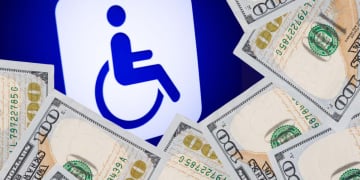Between March and April 2025, the Supplemental Nutrition Assistance Program (SNAP) in Texas faced a crucial debate. The state Senate passed Senate Bill 379 (SB 379), which seeks to prohibit the use of benefits to purchase products that are actually very popular among low-income populations who receive these types of “food stamps.” Although the initiative was not implemented immediately, its progress sets a precedent for future reforms.
SNAP benefits are part of a federal program managed by the US Department of Agriculture and are intended to provide American families with funds to purchase nutritious foods. Across the United States, approximately 42 million people are beneficiaries of these awards. In Texas, the number of people who depend on this money amounts to 3.4 million, according to state data.
Now, SNAP benefits are restricted: Products you can’t buy from now on
SB 379, backed 22-8 on April 1, 2025, still requires approval from the Texas House of Representatives, the governor’s signature, and a federal endorsement from the U.S. Department of Agriculture (USDA). Its goal is to align the program with its original purpose: to promote nutritious eating. “Taxpayer money should not finance foods that harm health,” argued Senator Mayes Middleton, promoter of the law.
Critics such as Senator Borris Miles warn that the measure would affect residents in food deserts, areas with limited access to fresh food. “Restricting options without addressing the lack of infrastructure is unfair,” he said. Official data indicates that 12% of Texans live in areas with few supermarkets, making it difficult to comply with the new rules if they are approved.
If he SB 379 exceeds all instances, the restrictions would come into force in September 2025. However, organizations such as Make Texans Healthy Again and detractors maintain irreconcilable positions. While the former celebrate the focus on public health, others emphasize that the measure does not address structural inequalities, such as the distribution of fresh food stores in rural and marginalized urban areas. Sweets, junk food, or soft drinks will be restricted in Texas, if the bill is passed.
SNAP benefits payments in Texas in April
While lawmakers decide what to do with this legislation, SNAP recipients continued to receive payments based on their Eligibility Determination Group (EDG). Households that were certified before June 1, 2020 get benefits between the 1 and the 15 of ever month, depending on the last digit of their EDG number. The payment table for the coming days is as follows:
- EDG ending in 0: Benefits available on April 1st
- EDG ending in 1: Benefits available on April 3
- EDG ending in 2: Benefits available on April 5
- EDG ending in 3: Benefits available on April 6
- EDG ending in 4: Benefits available on April 7
- EDG ending in 5: Benefits available on April 9
- EDG ending in 6: Benefits available on April 11
- EDG ending in 7: Benefits available on April 12
- EDG ending in 8: Benefits available on April 13
- EDG ending in 9: Benefits available on April 15
The 2.5% Cost of Living Adjustment (COLA), effective since October 2024, continued to apply, offering a slight increase in aid amounts. This adjustment, linked to inflation, seeks to mitigate the rise in prices of basic foods. For families with elderly or disabled adults, eligibility rules remained flexible, prioritizing their access without requiring compliance with work requirements.
Some families can receive up to $1,756, but not all: this “maximum” number is for those households that have 8 members. Effective for fiscal year 2025 (Oct. 2024 to Sep. 2025), maximum payments are as follows:
- Household size 1: $292
- Household size 2: $536
- Household size 3: $768
- Household size 4: $975
- Household size 5: $1,158
- Household size 6: $1,390
- Household size 7: $1,536
- Household size 8: $1,756
- Each additional person: $220
Texas is included in this list of 48 contiguous states, so these values are those that apply to SNAP benefits recipients in the state this year.




